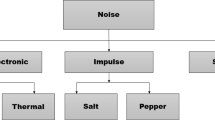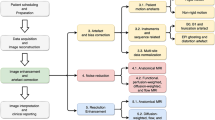Abstract
It is known that various medical devices introduce blur to recorded images due to many factual yet inevitable limitations. Thus, it is highly desirable to provide an efficient solution for such prevalent problem. In this article, a new sharpening filter is proposed to improve the edges and fine details of medical images. In the proposed filter, the sharpening process is achieved by deducting specific spatial information which is determined expeditiously from the original image itself with the existence of a special tuning weight that controls the amount of the produced sharpness. The aforesaid procedure helped to increase the acutance of edges and improve the overall sharpness significantly in the processed images. The proposed filter was evaluated using two advanced image quality assessment metrics and was compared with four well-known image sharpening techniques. Intensive experiments and comparisons using different 2D and 3D real-degraded medical images revealed that the proposed filter has better performance and properties than several existing techniques, and is more suitable for sharpening medical images.
Graphical Abstract







Similar content being viewed by others
References
Fu, S., Ruan, Q., Wang, W., Gao, F., & Cheng, H. D. (2007). A feature-dependent fuzzy bidirectional flow for adaptive image sharpening. Neurocomputing, 70(4), 883–895. https://doi.org/10.1016/j.neucom.2006.10.035.
Cao, G., Zhao, Y., Ni, R., & Kot, A. C. (2011). Unsharp masking sharpening detection via overshoot artifacts analysis. IEEE Signal Processing Letters, 18(10), 603–606. https://doi.org/10.1109/LSP.2011.2164791.
Haq, N., Hayat, K., Noreen, N., & Puech, W. (2011) Image sharpening by DWT-based hysteresis. In International conference on advanced concepts for intelligent vision systems (pp. 429–436). https://doi.org/10.1007/978-3-642-23687-7_39.
Trifas, M. A., Tyler, J. M., & Pianykh, O. S. (2006) Applying multiresolution methods to medical image enhancement. In Proceedings of the 44th annual southeast regional conference (pp. 254–259). https://doi.org/10.1145/1185448.1185506.
Singh, N. K., & Sunaniya, A. K. (2017). An adaptive image sharpening scheme based on local intensity variations. Signal, Image and Video Processing, 11(5), 777–784. https://doi.org/10.1007/s11760-016-1022-2.
Mahmoud, T. A., & Marshall, S. (2009). Edge-detected guided morphological filter for image sharpening. EURASIP Journal on Image and Video Processing, 2008, 1–9. https://doi.org/10.1155/2008/970353.
Yang, C. C. (2014). Finest image sharpening by use of the modified mask filter dealing with highest spatial frequencies. Optik-International Journal for Light and Electron Optics, 125(8), 1942–1944. https://doi.org/10.1016/j.ijleo.2013.09.070.
Panetta, K., Zhou, Y., Agaian, S., & Jia, H. (2011). Nonlinear unsharp masking for mammogram enhancement. IEEE Transactions on Information Technology in Biomedicine, 15(6), 918–928. https://doi.org/10.1109/TITB.2011.2164259.
Osher, S., & Rudin, L. I. (1990). Feature-oriented image enhancement using shock filters. SIAM Journal on Numerical Analysis, 27(4), 919–940. https://doi.org/10.1137/0727053.
Gui, Z., & Liu, Y. (2011). An image sharpening algorithm based on fuzzy logic. Optik-International Journal for Light and Electron Optics, 122(8), 697–702. https://doi.org/10.1016/j.ijleo.2010.05.010.
Sheppard, A. P., Sok, R. M., & Averdunk, H. (2004). Techniques for image enhancement and segmentation of tomographic images of porous materials. Physica A: Statistical Mechanics and its Applications, 339(1), 145–151. https://doi.org/10.1016/j.physa.2004.03.057.
Kheradmand, A., & Milanfar, P. (2015). Non-linear structure-aware image sharpening with difference of smoothing operators. Frontiers in ICT, 2(22), 1–12. https://doi.org/10.3389/fict.2015.00022.
Calder, J., Mansouri, A., & Yezzi, A. (2010). Image sharpening via Sobolev gradient flows. SIAM Journal on Imaging Sciences, 3(4), 981–1014. https://doi.org/10.1137/090771260.
Toh, K. K., & Isa, N. A. (2011). Locally adaptive bilateral clustering for image deblurring and sharpness enhancement. IEEE Transactions on Consumer Electronics, 57(3), 1227–1235. https://doi.org/10.1109/TCE.2011.6018878.
Ma, T., Li, L., Ji, S., Wang, X., Tian, Y., Al-Dhelaan, A., et al. (2014). Optimized Laplacian image sharpening algorithm based on graphic processing unit. Physica A: Statistical Mechanics and its Applications, 416, 400–410. https://doi.org/10.1016/j.physa.2014.09.026.
Ping, W., Junli, L., Dongming, L., & Gang, C. (2006). A multi-scale enhancement method to medical images based on fuzzy logic. In IEEE region 10 conference (pp. 1–4). https://doi.org/10.1109/tencon.2006.343785.
Zhao, Y. F., Gao, Q. W., Zhang, D. X., & Lu, Y. X. (2007). Medical X-ray image enhancement based on Kramer’s PDE model. Journal of Electronic Science and Technology, 5(2), 187–190.
Qin, X., Liu, S., Wu, Z., & Jun, H. (2008). Medical image enhancement method based on 2D empirical mode decomposition. In 2nd international conference on bioinformatics and biomedical engineering (pp. 2533–2536). https://doi.org/10.1109/icbbe.2008.967.
Jung, C. R., & Scharcanski, J. (2009). Sharpening dermatological color images in the wavelet domain. IEEE Journal of Selected Topics in Signal Processing, 3(1), 4–13. https://doi.org/10.1109/JSTSP.2008.2011113.
Agaian, S. S., & McClendon, S. A. (2010). Novel medical image enhancement algorithms. In Image Processing: Algorithms and Systems VIII (pp. 75320W1–75320W12). https://doi.org/10.1117/12.839003.
Anand, S., Kumari, R. S., Jeeva, S., & Thivya, T. (2013). Directionlet transform based sharpening and enhancement of mammographic X-ray images. Biomedical Signal Processing and Control, 8(4), 391–399. https://doi.org/10.1016/j.bspc.2013.02.001.
Anand, S., & Kumari, R. S. (2013). Sharpening enhancement of computed tomography (CT) images using hyperbolic secant square filter. Optik-International Journal for Light and Electron Optics, 124(15), 2121–2124. https://doi.org/10.1016/j.ijleo.2012.06.026.
Anand, S., Kumari, R. S., Thivya, T., & Jeeva, S. (2013). Sharpening enhancement of ultrasound images using contourlet transform. Optik-International Journal for Light and Electron Optics, 124(21), 4789–4792. https://doi.org/10.1016/j.ijleo.2013.01.085.
Bhateja, V., Misra, M., & Urooj, S. (2016). Non-linear polynomial filters for edge enhancement of mammogram lesions. Computer Methods and Programs in Biomedicine, 129, 125–134. https://doi.org/10.1016/j.cmpb.2016.01.007.
Zafeiridis, P., Papamarkos, N., Goumas, S., & Seimenis, I. (2016). A new sharpening technique for medical images using wavelets and image fusion. Journal of Engineering Science & Technology Review, 9(3), 187–200.
Lee, M. S., Park, C. H., & Kang, M. G. (2017). Edge enhancement algorithm for low-dose X-ray fluoroscopic imaging. Computer Methods and Programs in Biomedicine, 152, 45–52. https://doi.org/10.1016/j.cmpb.2017.09.010.
Jeevakala, S. (2018). Sharpening enhancement technique for MR images to enhance the segmentation. Biomedical Signal Processing and Control, 41, 21–30. https://doi.org/10.1016/j.bspc.2017.11.007.
Deng, G. (2011). A generalized unsharp masking algorithm. IEEE Transactions on Image Processing, 20(5), 1249–1261. https://doi.org/10.1109/TIP.2010.2092441.
Hautière, N., Tarel, J. P., Aubert, D., & Dumont, E. (2011). Blind contrast enhancement assessment by gradient ratioing at visible edges. Image Analysis & Stereology, 27(2), 87–95. https://doi.org/10.5566/ias.v27.p87-95.
Narvekar, N., & Karam, L. (2011). A no-reference image blur metric based on the cumulative probability of blur detection (CPBD). IEEE Transactions on Image Processing, 20(9), 2678–2683. https://doi.org/10.1109/TIP.2011.2131660.
Acknowledgements
The author would like to thank the respectable reviewers for their helpful remarks.
Author information
Authors and Affiliations
Corresponding author
Rights and permissions
About this article
Cite this article
Al-Ameen, Z. Sharpness Improvement for Medical Images Using a New Nimble Filter. 3D Res 9, 12 (2018). https://doi.org/10.1007/s13319-018-0164-0
Received:
Revised:
Accepted:
Published:
DOI: https://doi.org/10.1007/s13319-018-0164-0




